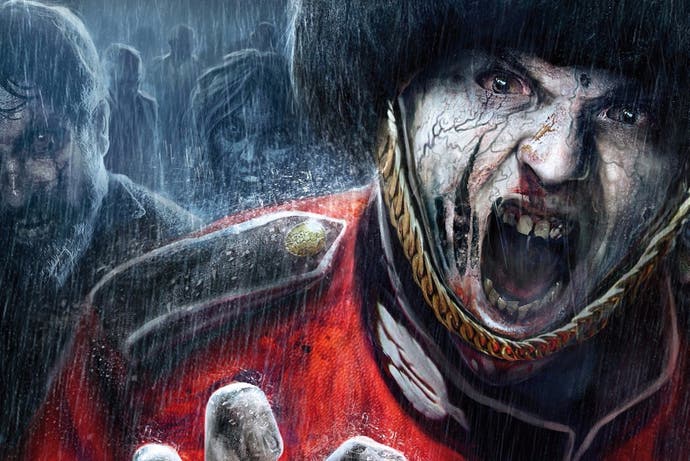Face-Off: Zombi
Undead or alive.
Considered a highlight of the Wii U's hardware launch, developer Straight Right decides that now is the time to give Zombi a run-around on PlayStation 4, Xbox One and PC. The single-player game is in many ways identical, but this budget release does promise some interesting visual tweaks. The question is: does this extend much further than a quick resolution boost to 1080p? And how have Wii U's off-screen controls fared in the move to the more conventional gamepad?
Using the LyN engine, the game's size is increased four-fold on these new editions - immediately suggesting some major upgrades to asset-work. On PS4, Xbox One and PC the game requires a meaty 22GB download, compared to only 5.6GB on Wii U. On close analysis of the PC game's directory, it's apparent that most of this data is inflated for level assets such as texture maps, while sound files also take up a good chunk of this increased 22GB download.
In terms of the basic rendering setup, both Xbox One and PS4 now push a native 1920x1080 while the original Wii U version's 1280x720 holds up surprisingly well upscaled in our comparison shots, largely due to the grim, dark London setting. It's fair to say that with a 2.25x boost to native resolution, PS4 and Xbox One offer a cleaner image with superior post-process anti-aliasing - but unfortunately, the chromatic aberration filter (used on all platforms) cuts a lot of the clarity we'd expect from a full 1080p title. The result is a superior presentation overall, but with such heavy filtering, the gains aren't as great as we'd usually expect from the divide.
On close inspection, PS4, Xbox One and PC all share the same assets, and in many cases deliver superior textures to Wii U - though in some cases, artwork remains unchanged. Certain walls simply show the same graffiti or stonework design lifted from the Nintendo release, while others bring about a huge leap - notably door signs where text is now actually legible. Pop-in is also less of an issue on the newer platforms, especially once loading a new area, where Wii U is still prone to streaming in textures late. Likewise, loading times are reduced, and doors open up immediately on PS4 and Xbox One - whereas Wii U waits at closed doors with a 'loading' prompt on occasion as it buffers the next area.
Besides this, everything else is exactly as presented on Wii U. The world, the lighting and even effects show little or no improvement from the 2012 release. However, there's one curious omission in the form of Zombi's 'dirty lens' filter - a screen-space effect that's cut from PS4 and Xbox One. On Wii U this obscures a player's view around brightly lit areas, and even PC fails to offer any option to enable it. Only resolution and v-sync toggles are given in its graphics menu, which makes this a very barebones effort on this platform.
Just as surprising are changes to the field of view (FOV) setting. PS4 and Xbox One run with a wider overview during gameplay (but not cut-scenes), whereas Wii U deliberately forces a narrow cone of vision. In many ways this affects the way the game's played; the new release makes it much easier to survey the area and spot enemies - and some might say it becomes too easy. For those wanting to revert back to the original style on Wii U, it's possible to tweak this in the options menu. By default, PS4, Xbox One and PC run at a 10 ten per cent FOV setting, whereas Wii U is a practical match for -5 per cent.
And how about performance? A 30fps cap with v-sync is a bit of a letdown on PS4 and Xbox One, especially given the meagre upgrades over Wii U's visuals. To add insult to injury, rain-soaked areas like Buckingham Palace cause stutters and dips below this 30fps target. Just as with Wii U this is a real problem area on PS4 and Xbox One, and lightning strikes bring about drops to the mid-20s on each. This is more consistently the case on Sony's console, which matches Wii U's lurches to 20fps as we approach the palace - whereas Xbox One surprisingly shows fewer issues.
Performance elsewhere is much improved on PS4 and Xbox One though. Wii U is the only one of the three to drop to the mid-20s on shooting explosive barrels, while the newer console releases hold at 30fps in matching tests. Added to that, the disc based version on Wii U suffers from asset streaming hitches while running between areas quickly, causing long stretches of stuttering as it attempts to seek data from the disc. By comparison, PS4 and Xbox One cope with fast sprints across the superkarmet area without any trouble.
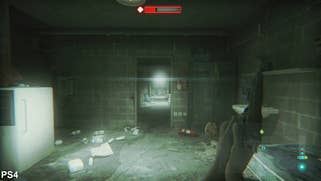
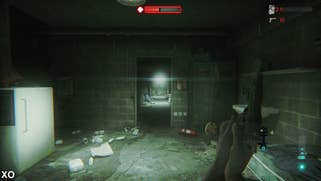
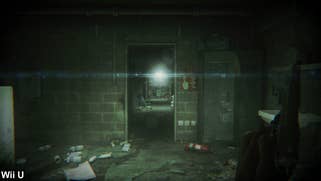
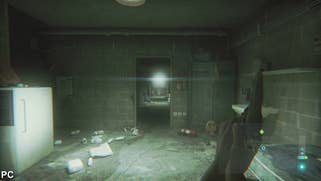

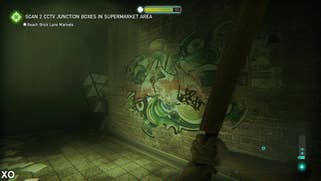


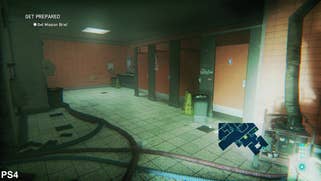
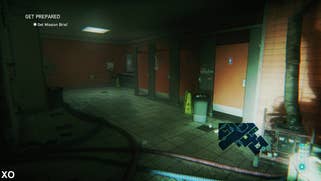
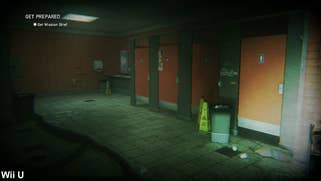

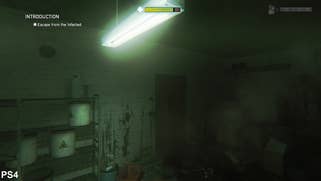

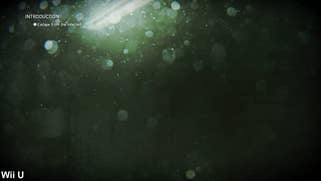

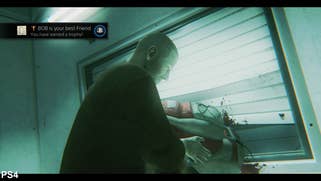

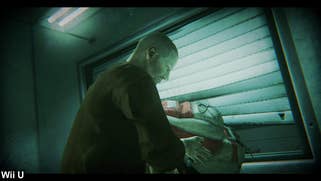


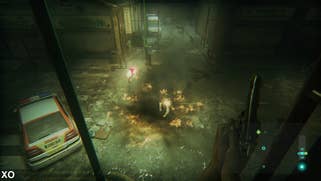
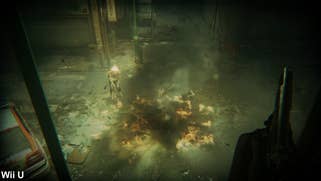
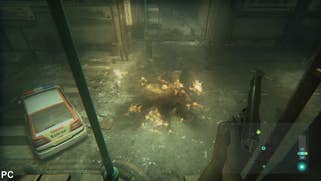
Meanwhile, PC is the only gateway to true 60fps playback in Zombi right now. While there's no benefit to going with PC in terms of effects or texture settings, the game's low demands makes 60fps very easily attainable on most mid-range cards - and possibly higher for those with 120Hz displays. We have encountered a few glitches here and there with this version - namely one where an objective wouldn't update to allow us to progress. But after a restart the game hasn't posed any stability issues beyond this.
All new versions of Zombi feature standard controller support too. This marks one of the greatest departures from the original Wii U edition, where off-screen play with its touchscreen UI made it stand out from the first wave of titles. The mini-map is now composited onto the main screen on PS4, Xbox One and PC, while controls for the flashlight, reloads and scanning the area are mapped to physical buttons. It translates very directly - and the analogue sticks are noticeably more responsive on the PS4 and Xbox One pads. However, sorting the inventory is less intuitive when browsing via d-pad, as compared to dragging and dropping items from the backpack with the Wii U's stylus.
Expectedly, features such as the Wii U's local multiplayer are also removed and that's a shame - on the original version, this was a neat extra that put the GamePad to work from a top-down view, letting one player plant enemies for the other to survive against. No equivalent is added for the new ports, with the menu option simply removed entirely.
Zombi - the Digital Foundry verdict
Zombi's visual upgrades on PS4, Xbox One and PC are small, but within expectations of a £16 budget-priced port. Its bump to 1080p is a fine starting point, though the detail boost on textures over the Wii U original is only a token effort. Those expecting a wholesale upgrade to suit the PS4 and Xbox One's specs will be disappointed here - the Wii U's solo experience is largely served as-is - and the benefits take close scrutiny to appreciate. Even PC sees no special treatment, handing in only graphics menu options for resolution and v-sync.
All in all, PS4 and Xbox One's control systems mark the biggest change overall, with surprisingly little lost by moving away from Wii U's touchscreen. Inventory control is trickier to handle, but accounted for in a small way with d-pad shortcuts - though otherwise scanning and gun reloads are just as accessible as before. On the whole, Zombi may have dropped the U affix, but the essentials make it to new platforms without losing the central hook.
The Wii U version is still worth experiencing for its unique control system of course. It's among the best uses of its largely neglected second screen, while its multiplayer mode remains an exclusive feature. PS4 and Xbox One do improve performance though, and despite drops below 30fps around Buckingham Palace, each offers a smoother ride overall. From a purely technical standpoint PC is an easy recommendation for pushing past this 30fps barrier. But given the quality of Zombi's core premise there was perhaps a missed opportunity here to go all out on all three, with a more lavish conversion for more powerful platforms.
